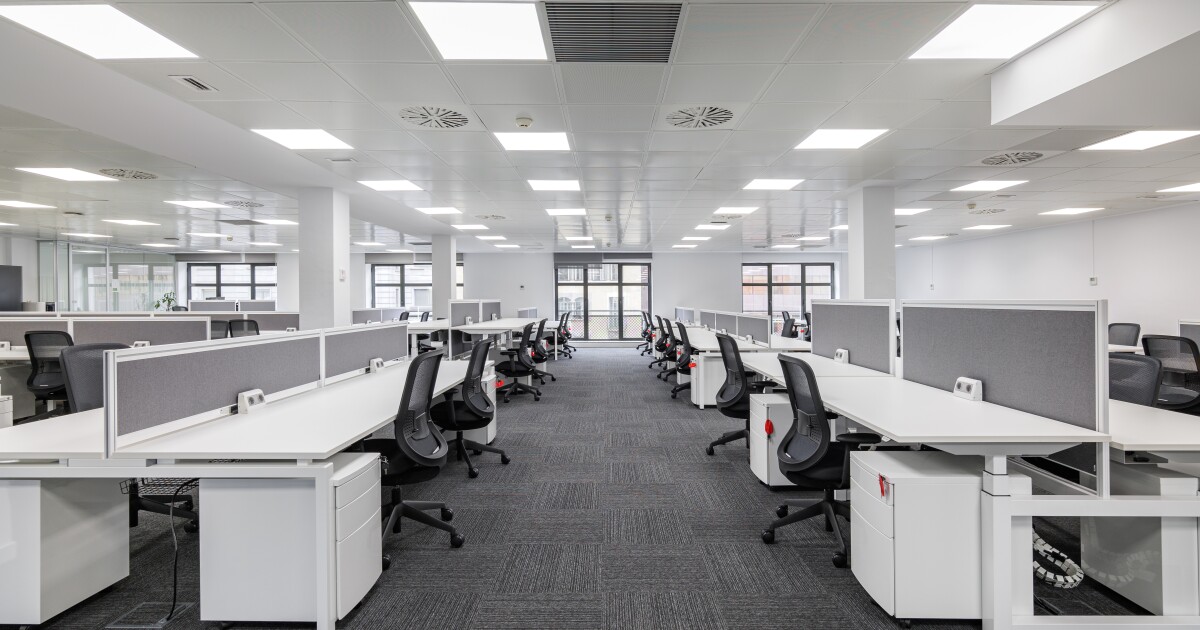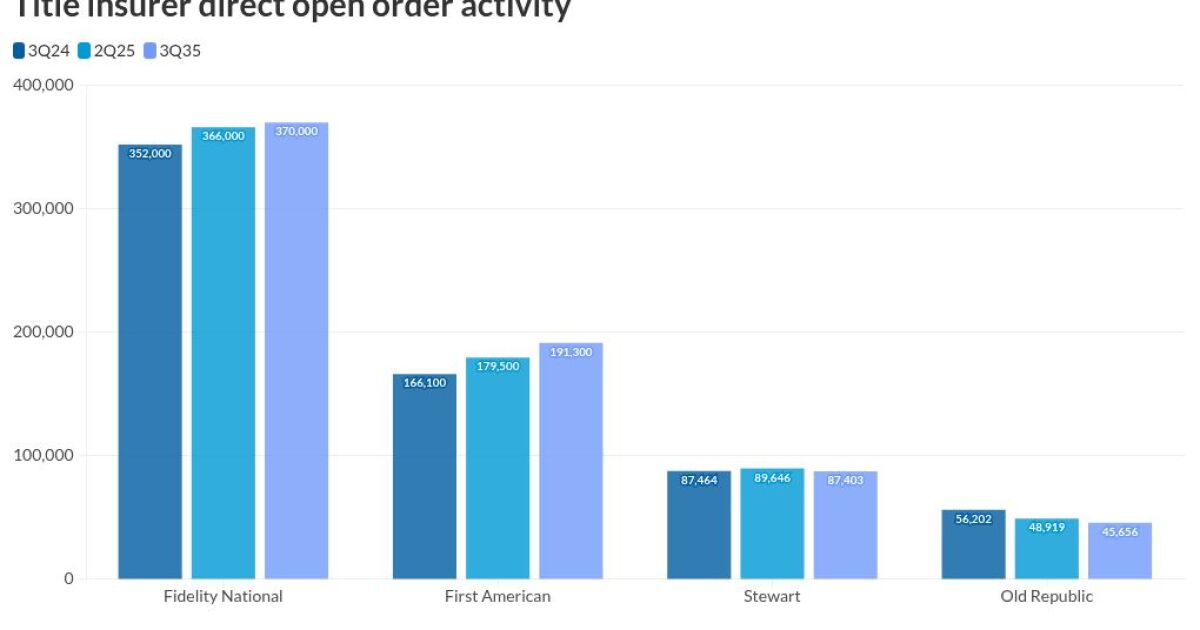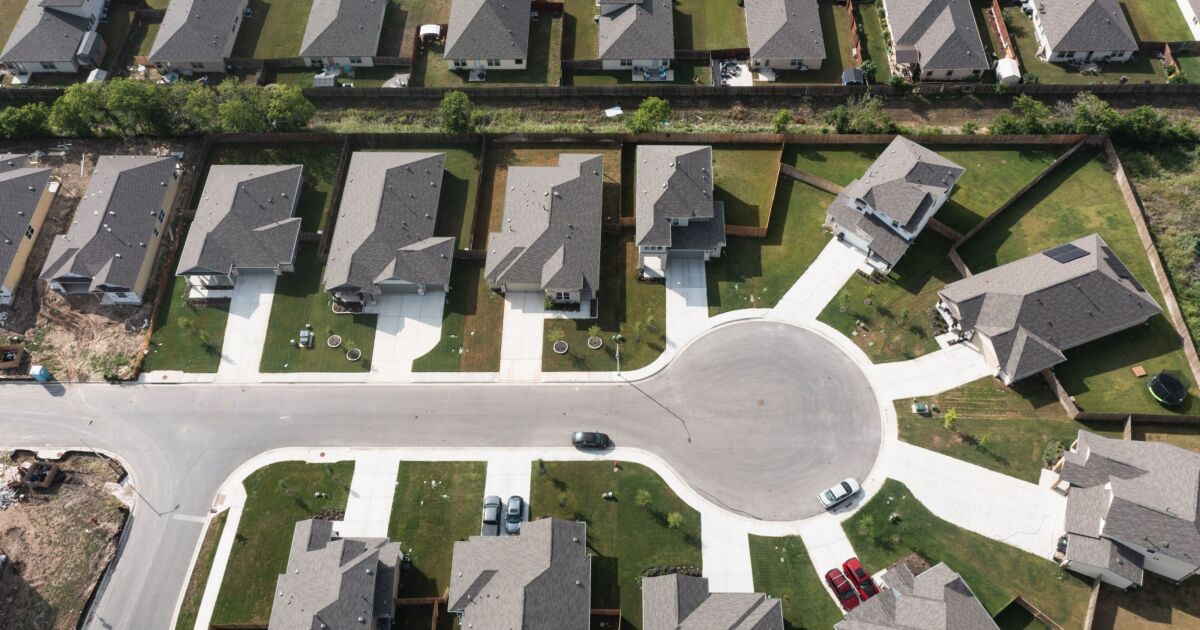
Soaring borrowing costs and plunging prices walloped the global commercial-property market last year. Now, more clarity around values and an urgent need to address looming debt maturities are expected to spark more deals.
Sellers and buyers are finally seeing more opportunities to transact after uncertainty nearly froze the market for much of last year. The average number of bids per deal climbed 16% in November 2023 from the end of 2022, according to Jones Lang LaSalle Inc.
And the opportunity may be vast: The brokerage estimates that property owners with loans maturing through the end of 2025 will need as much as $570 billion in new equity given how sharply values have fallen.
With some central banks starting to signal that the rapid rate-hiking cycle is winding down, investors have gained more insight into borrowing costs. And several real estate deals — including the sale of roughly $33 billion in commercial-property debt from the failed Signature Bank — have also provided more transparency on values. The clarity is starting to spur some optimism in the beleaguered market.
"We're seeing more bids, and we're seeing more tours," Michael Gigliotti, a senior managing director at JLL, said in a phone interview. "You have maturing loans, you have dry capital, you have parties interested in investing in real estate."
The market still needs to see a longer period of stability with interest rates to fully unlock the capital that's on the sidelines, according to JLL. And many owners may wait to transact until values stabilize even more or potentially start rising.
But with more than $3 trillion of property around the world that has debt set to mature through 2025, many owners need to figure out what to do with certain properties and debt in the coming months, according to JLL.
"The debt markets are stabilizing so there's less yield to be made in debt, so there's more people now looking at equity," said Adam Spies, co-head of US capital markets at Newmark Group Inc. "People feel that they're not at the top anymore looking over a cliff, but perhaps at the bottom, looking up. Investors feel like its a good time to start making investments."
Other firms are seeing early signs that the commercial real estate market is starting to settle more. Real estate analytics company Green Street said its index of commercial property prices was flat in December from a month earlier.
"The correction in real estate pricing that began two years ago appears to have run its course," Peter Rothemund, co-head of strategic research at Green Street, said in a statement on Jan. 5. "Commercial real estate is now fairly priced versus yields on corporate bonds, and market pricing of listed" real estate investment trusts suggests something similar.
More demand
There's evidence that buyer interest is perking up for some Manhattan towers. An office building in Manhattan's Tribeca neighborhood at 101 Franklin St., which is being marketed by Newmark as a potential residential conversion, has attracted dozens of tours and received more than a dozen bids, according to people familiar with the matter who asked not to be named citing private details.
The seller, Columbia Property Trust, is asking around $115 million for the property — more than 40% off the price it paid in 2019 — and is also offering potential financing for the deal, the people said. A representative for Columbia Property Trust declined to comment.
DWS Group's office tower in the Financial District, at 222 Broadway, is also being pitched as a conversion opportunity and has attracted many potential investors seeking to tour the building, one of the people said. A DWS representative declined to comment.
Josh Rahmani, a co-founder of Empire Capital Holdings, has been actively bidding on and buying up New York offices over the past two years as he seeks to invest in commercial property on behalf of wealthy families. But now, more bidders are joining the fray, he said.
"There was a vacant building I was bidding on, but the price went up beyond where we were willing to take it a month ago, so there's more activity," Rahmani said. "If you have a motivated seller and they have to sell now, the price is what the market can bear, which is still at great discounts."
Growing pressure
The Federal Reserve kept its benchmark rate steady at its meeting in December while also signaling the end to the most aggressive tightening cycle in a generation. Property owners who don't have to urgently sell may be inclined to hold onto assets if rates come down.
But the refinancing shortfall — which ranges between $270 billion and $570 billion according to JLL — could spur some owners to put assets or loans up for sale, including distressed transactions in some cases.
On the other side, potential buyers and investors are flush with funds. JLL said that there's $402 billion of dry powder for commercial real estate, according to data as of October.
"This reset in values will both challenge capital and catalyze liquidity," Richard Bloxam, chief executive officer of capital markets at JLL, said in a statement. "There is absolutely uniform understanding that pricing has changed. Given the quantum of dry powder, there will be a considerable first-mover advantage for capital that can deploy quickly and mobilize around opportunities as market fundamentals improve."
Some buyers have deployed capital into major deals recently. In December, the luxury retailer Prada SpA and an entity tied to the Prada family
Well-known properties in California also found buyers. The University of California agreed to pay $700 million for a former Los Angeles shopping mall that had been redeveloped as offices for Alphabet Inc.'s Google. The university plans to convert it to a medical and engineering research park.
The Aon Center in downtown LA sold for $147.8 million, about 45% less than its previous purchase price in 2014.
The investment arm of property firm Kassin Sabbagh Realty purchased a 49% stake in a 34-story Manhattan office building at 1410 Broadway in Manhattan. The building, owned by L.H. Charney Associates, was previously leased to WeWork, but the coworking firm's lease was terminated prior to its bankruptcy filing. Since then, more space has been leased, bringing the tower's occupancy up to more than 90%.
"Now that rates appear that they aren't going to go up anymore, it's giving buyers assurances that they won't be in a worse situation six months from now in trying to close or get a loan," said Albert Sultan, a broker at KSR. "There's a handful of players that have returned to the market — not a ton — but that gives me optimism that things will return overall."
US concentration
The U.S. could be a particularly interesting spot, according to JLL. Of the $3.1 trillion property assets with maturing debt through the end of 2025, more than three quarters of that are concentrated in the U.S., specifically in the residential and office sectors, the brokerage said.
The U.S. is furthest along in its cycle, which could draw more attention from buyers hoping to catch the bottom of the price decline. That includes major players such as Morgan Stanley's real estate investing platform, which is seeking out opportunities that arise from the turmoil in the industry.
"Certainly a lot of investors are interested in investing in real estate when they think they're picking the bottom," JLL's Gigliotti said.



